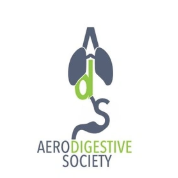Aerodigestive programs provide comprehensive diagnostic testing to uncover the causes of complex aerodigestive conditions. Because these issues can span multiple systems, the program offers a wide range of evaluations, often coordinated so that they’re done together. Here are some key diagnostic services and tests you may encounter:
• Airway Endoscopy (Laryngoscopy/Bronchoscopy): This involves using a tiny camera on a flexible or rigid scope to look inside the airway. An ENT specialist may perform a laryngoscopy to view the throat and voice box, and a pulmonologist may do a bronchoscopy to examine the windpipe (trachea) and bronchi in the lungs. In an aerodigestive clinic, these are often done as a combined procedure under anesthesia, sometimes alongside an upper endoscopy (see below) – a coordination often termed a triple endoscopy . This allows a thorough inspection of the airway from the nose down into the lungs to identify issues like structural narrowing, dynamic collapse, inflammation, or abnormal anatomy. During these procedures, doctors can also collect samples (like a bronchoalveolar lavage for lung secretions or biopsies of airway tissue) if needed to test for infections or microscopic problems.
• Upper Endoscopy (EGD – Esophagogastroduodenoscopy): The gastroenterologist uses an endoscope to visualize the upper digestive tract – the esophagus, stomach, and the first part of the small intestine. This test is crucial for detecting problems like esophagitis (inflammation due to reflux or EoE), strictures, or other abnormalities in the swallowing tube. In aerodigestive care, an upper endoscopy is frequently performed together with airway endoscopies under one anesthesia, so the child doesn’t need separate procedures. Biopsies (small tissue samples) are often taken to check for conditions like eosinophilic esophagitis, which can be present even if the esophagus looks normal by eye .
• Swallowing Studies: These tests evaluate how well a child swallows and whether anything is entering the airway during swallowing. A common study is the Modified Barium Swallow Study (MBSS), an X-ray video fluoroscopy done in the radiology department. The child swallows liquids or foods mixed with a contrast material (barium) and the motion X-ray shows if the material goes down the esophagus properly or if it trickles toward the airway. Another tool available in some programs is Fiberoptic Endoscopic Evaluation of Swallowing (FEES), where a very thin scope is passed through the nose (while the child is awake) to watch the throat during swallows of colored liquids or foods . FEES can be done in clinic by the ENT or SLP and doesn’t require radiation. Both MBSS and FEES help identify aspiration or swallowing deficits so that the team can plan appropriate interventions (like thickening liquids or specific therapy techniques).
• Imaging (X-ray, CT, MRI): Imaging studies provide pictures of the structures that can’t be seen directly by scopes. A Chest X-ray or neck X-ray might be a first step to spot things like an enlarged esophagus or chronic lung changes. If more detail is needed, a CT scan might be used, for example a CT of the chest and airway to look at the trachea and bronchi anatomy (helpful in tracheomalacia or to map out a stenosis). In complex cases, an MRI could be considered, especially for soft tissue details or vascular structures that might compress the airway. Some children with persistent issues may also get a videofluoroscopic airway exam or an upper GI series to see how the anatomy is functioning. These imaging modalities are arranged as needed, and the team will explain which (if any) are appropriate for your child’s case.
• Sleep Study (Polysomnography): If your child has symptoms of sleep-disordered breathing (snoring, pausing in breathing at night, or has a tracheostomy and is on a ventilator), the program might conduct an overnight sleep study in a sleep lab. This study monitors breathing, oxygen levels, CO₂, brain waves, and other parameters while your child sleeps. It can diagnose conditions like obstructive sleep apnea or differentiate whether breathing issues in sleep are due to airway obstruction vs. brain signaling. The aerodigestive team (including pulmonology and ENT) uses sleep study results to decide if interventions like adenotonsillectomy, CPAP therapy, or tracheostomy changes are needed.
• Esophageal pH-Impedance Study: In some cases, to fully evaluate reflux, the gastroenterologist may recommend a 24-hour pH-impedance probe. This test measures acid and non-acid reflux episodes in the esophagus over a day. A thin wire or wireless capsule is placed in the esophagus that records when stomach contents move upward. This test can help correlate reflux with symptoms (like cough or apnea episodes). It’s especially useful if reflux is suspected of contributing to lung problems but isn’t clearly seen on endoscopy alone.
• Manometry and Functional Assessments: For certain motility issues, an esophageal manometry study might be done to measure how well the esophagus muscles contract and coordinate. Additionally, feeding evaluations by occupational or speech therapists (where they observe the child eat various foods in a therapy setting) can be considered a diagnostic tool to see behavior and coordination during meals. These functional assessments give insight into whether issues are anatomical, neurological, or behavioral.
Not every child will need all of these tests – the aerodigestive team will tailor the diagnostic work-up to your child’s specific symptoms. One of the advantages of the program is that if multiple tests are needed, they will orchestrate them efficiently (often combining procedures or scheduling them back-to-back) so that you get answers as quickly as possible with minimum discomfort to your child.
